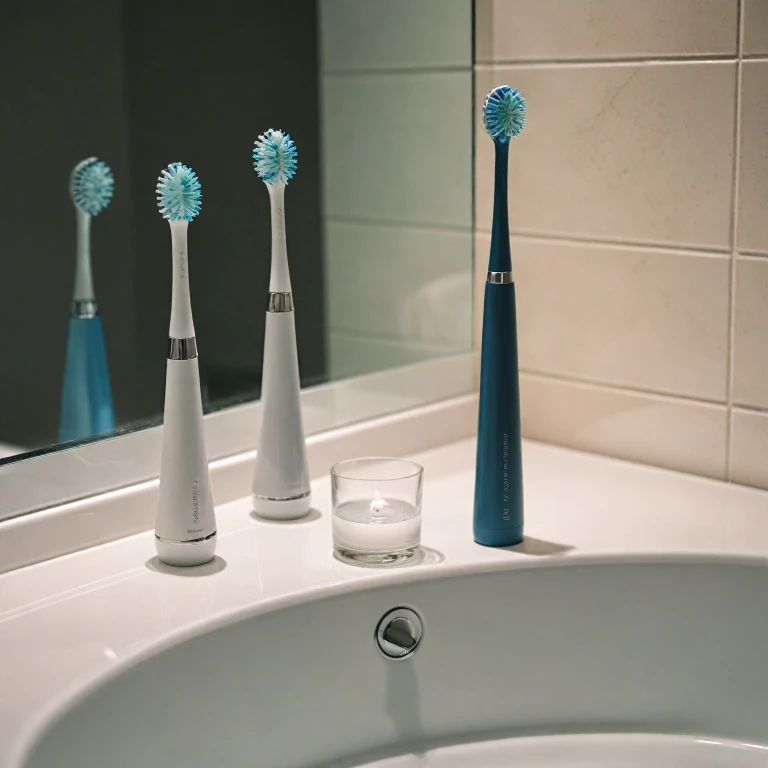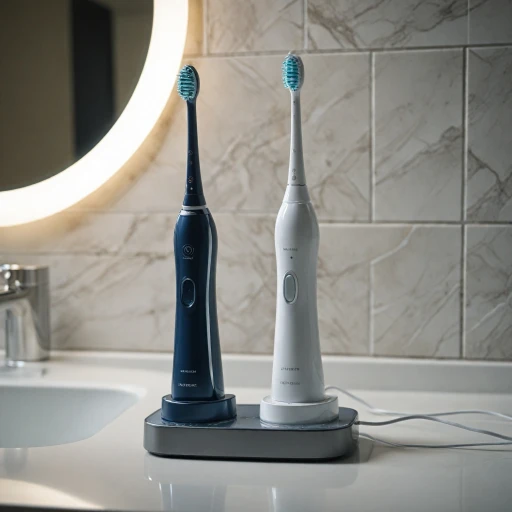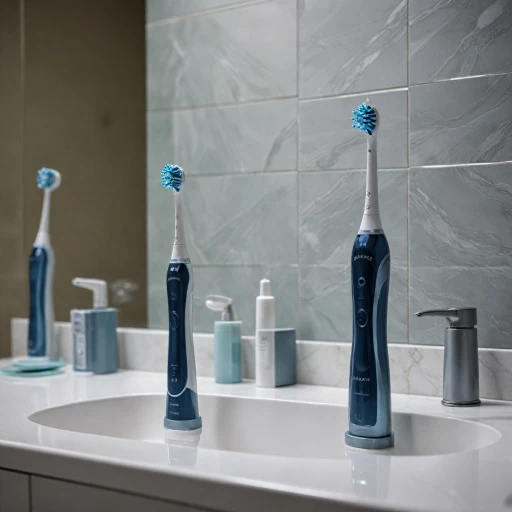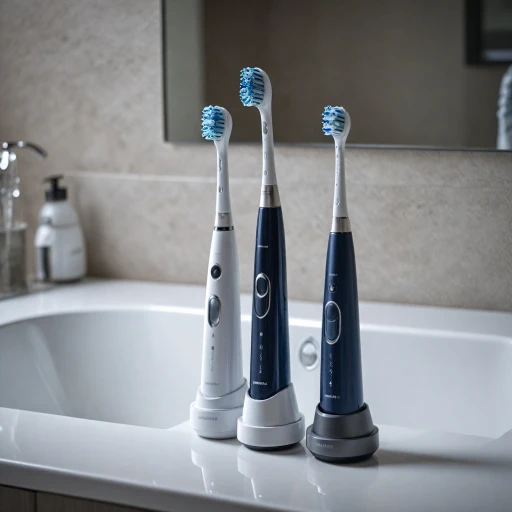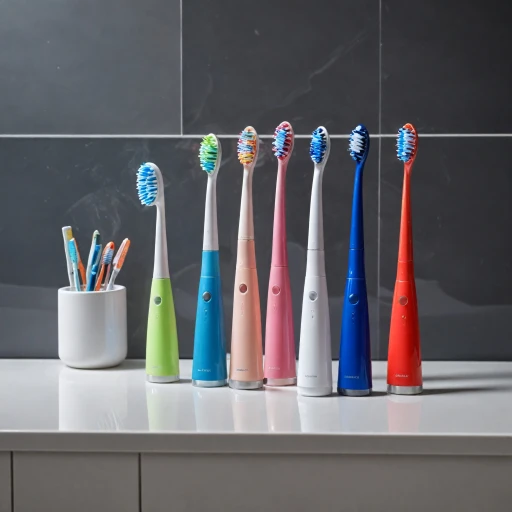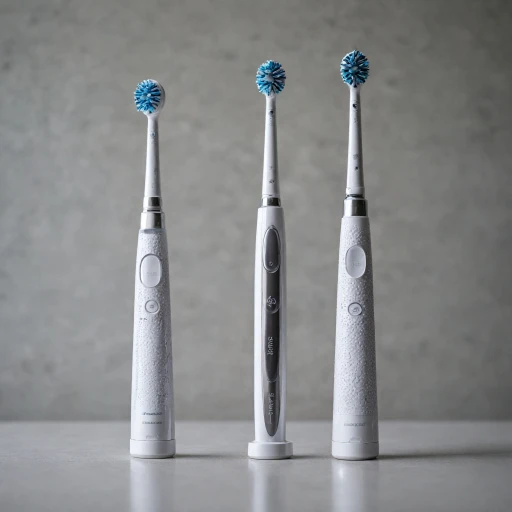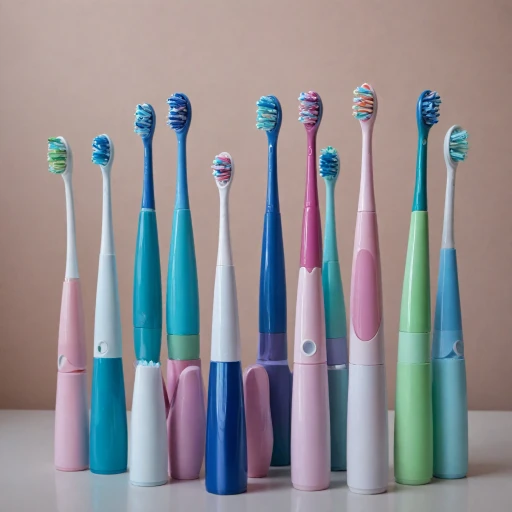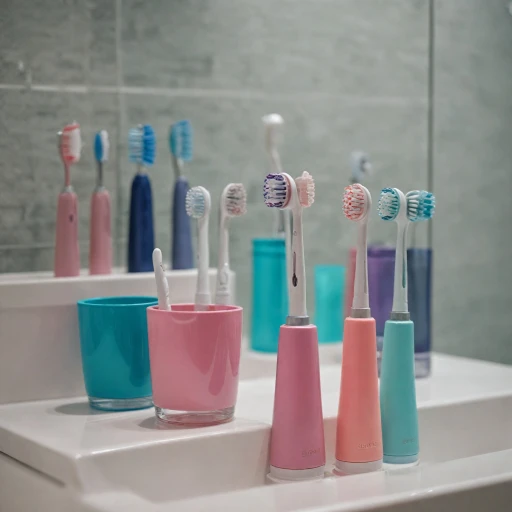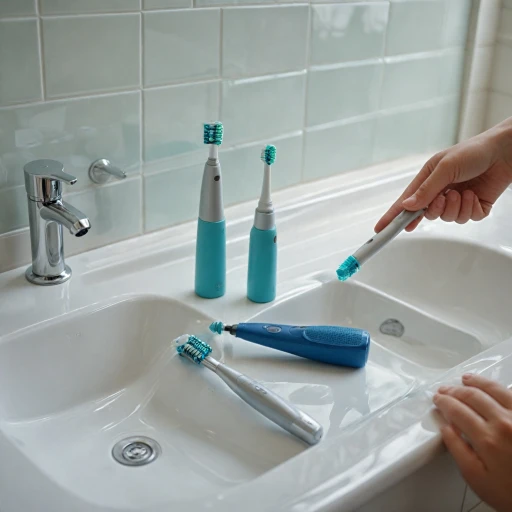
Understanding Sonic Toothbrushes
Delving into Sonic Technology
Sonic toothbrushes have gained popularity for their advanced cleaning capabilities and are often seen as a modern alternative to older models. Using high-frequency vibrations, these brushes deliver thousands of brush strokes per minute, effectively dislodging plaque and promoting better oral health. The innovation lies in their ability to create a fluid dynamic action, which allows the fluid to penetrate between teeth and along the gumline. One of the leading brands in this category, Philips Sonicare, has built a reputation for offering powerful cleaning while ensuring a gentle brushing experience. Compared to oscillating toothbrushes, sonic toothbrushes provide a different cleaning motion that might be more suitable for some users. For those considering the shift from manual toothbrushes to electric ones, sonic brushes offer a middle ground between gentle brushing and thorough cleaning. They are ideal for individuals who want to maintain oral health without compromising on comfort. To explore the myriad benefits and understand if a sonic brush suits your needs, consider checking out this comprehensive overview on the benefits of a sonic brush. Each user may experience sonic technology differently, making it crucial to consider your personal dental health needs and any specific cleaning challenges you face. With a wide range of models available, users can find the best match to meet their oral care objectives. When considering a sonic toothbrush, take into account various factors such as cost, longevity, and specific features offered, especially when comparing it to oscillating alternatives.Exploring Oscillating Toothbrushes
Understanding the Unique Functionality
When it comes to considering an oscillating toothbrush for your dental care routine, it's essential to understand how these devices differ from other options like sonic brushes. Oscillating toothbrushes operate using a back-and-forth rotating motion, typically powered by small, high-speed motors that drive the brush head to rotate. This oscillating electric motion is fundamental in delivering effective plaque removal by dislodging particles from the surfaces and crevices of your teeth.
While not as widely revered for their rapid vibrations as sonic toothbrushes, oscillating toothbrushes prove to be highly effective when it comes to removing plaque due to their targeted motion. These brushes, usually associated with oral care giants like Philips and other comparable brands, work by providing a distinct cleaning action compared to manual toothbrushes.
Selecting the Right Brush Head
A distinctive feature to consider with oscillating toothbrushes is the variety of brush heads available. Different brush heads can further enhance the cleaning efficiency. It's a matter of personal preference and specific oral health needs when choosing between them. Some users prefer smaller brush heads for easier maneuverability, particularly when reaching posterior teeth.
In comparison to manual toothbrushes and their generally fixed brush designs, oscillating rotating brush heads enable a personalized cleaning experience, allowing for better adaptation to individual cleaning requirements. This targeted flexibility can be especially beneficial for those with specific oral health concerns, such as gum sensibility or extensive plaque build-up.
A Focus on Dental Health
For anyone serious about their dental hygiene, the use of advanced cleaning devices like an oscillating toothbrush can be a game-changer. While sonic technology boasts high-frequency vibrations, oscillating toothbrushes emphasize their mechanical action to achieve remarkable results. These brushes not only offer a modern alternative to manual toothbrushes but have also been engineered to promote excellent oral health. By rotating, oscillating, and thoroughly cleaning teeth, users can anticipate a cleaner smile and improved gum condition.
To explore the differences between sonic and oscillating toothbrushes, understanding the unique advantages of each can guide you in making the best choice for your dental regimen.
Comparing Cleaning Efficiency
Evaluating the Efficacy of Different Brush Motions
When it comes to maintaining optimal oral health, the efficiency of your toothbrush is crucial. The choice between sonic and oscillating electric toothbrushes often boils down to how effectively each type can clean teeth and remove plaque. Each toothbrush model brings its own set of advantages to the table, offering distinctive mechanisms of action.
Sonic technology utilizes high-frequency vibrations to create rapid side-to-side brush head motion. This technology is reputed for its ability to agitate fluids, like saliva and toothpaste, into hard-to-reach areas, enhancing dental cleaning. A popular example in this category is the Philips Sonicare, known for its impressive fluid dynamics and ability to reach beyond the bristle tips.
On the other hand, oscillating toothbrushes, synonymous with rotating oscillating heads, offer a different cleaning approach. This type of brush features a brush head that oscillates and rotates back and forth, a technique that has been effective in mechanical plaque removal. Many users of oscillating electric toothbrushes report a thorough, dentist-like clean, replicating the experience of a professional cleaning session.
While both types display a compelling efficacy in cleaning, some studies suggest oscillating brushes may have a slight edge in plaque removal. However, the increased area coverage provided by sonic brushes can offer an exceptional mouthfeel due to their fluid dynamics.
Ultimately, whether an electric toothbrush is better for an individual’s needs may depend on personal preference as much as dental advice. Understanding the lifespan of toothbrush batteries can also influence decision-making, as it affects both performance and long-term value. For further insights, visit the dedicated page on toothbrush battery lifespans.
User Experience and Comfort
Evaluating User Experience and Comfort
When considering an electric toothbrush, user experience and comfort are pivotal. Sonic toothbrushes and oscillating toothbrushes both strive to enhance your brushing routine, each utilizing unique technologies. Let's delve into how these elements impact your oral care journey.
Sonic Brushes: The high-frequency vibrations in sonic toothbrushes create an intense cleaning action. This rapid motion not only contributes to effective plaque removal but also generates a massaging effect on gums. Users often find this soothing, promoting an overall pleasant brushing experience. Additionally, the fluid dynamics generated by sonic technology helps clean teeth beyond the direct contact with the brush bristles.
Oscillating Brushes: In contrast, oscillating electric toothbrush models use a rotating, oscillating motion to dislodge plaque. The rotating oscillating action can be more familiar to users transitioning from a manual toothbrush, given its mechanical feel. Some might appreciate the precision of the oscillating movement, which targets specific areas with adeptness.
The Human Touch: Comfort in toothbrushes is also about ergonomics and brush head design. Both sonic brushes and oscillating options offer various brush heads tailored to different dental needs, ensuring a better fit for your oral health requirements. For instance, Philips Sonicare provides a range of brush heads compatible with their models, aimed at enhancing specific results like plaque removal or gum care.
In your pursuit of the best electric toothbrush, understanding these nuances between the sonic and oscillating options will guide you in selecting the tool that aligns with your comfort and oral care needs.
Cost and Longevity Considerations
Evaluating the Cost and Longevity of Electric Toothbrushes
When considering an electric toothbrush, the cost and longevity are crucial factors that can influence your decision. Both sonic and oscillating toothbrushes come with varying price tags, often reflecting their features and technology. However, understanding the long-term value is essential for making an informed choice.
Electric toothbrushes, whether sonic or oscillating, generally have a higher upfront cost compared to manual toothbrushes. This initial investment can be justified by their superior plaque removal capabilities and enhanced oral health benefits. Brands like Philips Sonicare offer a range of sonic toothbrushes that are known for their advanced cleaning technology, which can be a worthwhile investment for those seeking better dental care.
Here are some considerations when evaluating cost and longevity:
- Initial Cost: Sonic toothbrushes, such as those in the Philips Sonicare series, often have a higher initial cost due to their advanced sonic technology. Oscillating toothbrushes, on the other hand, may offer more budget-friendly options.
- Replacement Brush Heads: Both types of electric toothbrushes require regular replacement of brush heads. Sonic brushes may have slightly more expensive heads, but they often last longer, providing a balance in cost over time.
- Battery Life: The longevity of the toothbrush's battery can affect overall cost efficiency. Sonic toothbrushes are known for their long-lasting battery life, reducing the frequency of replacements and offering better value.
- Durability: Investing in a durable electric toothbrush can save money in the long run. High-quality models from reputable brands tend to offer better durability and warranty options.
Ultimately, choosing between a sonic and an oscillating toothbrush will depend on your budget and how much you value the additional features and benefits each type offers. Weighing these factors alongside cleaning efficiency and user comfort can help you find the best electric toothbrush for your needs.
Choosing the Right Toothbrush for You
Factors to Consider When Choosing Your Ideal Toothbrush
When deciding on the right electric toothbrush for your needs, it's essential to weigh various factors. Both sonic and oscillating toothbrushes offer unique benefits, and your personal preferences will significantly influence your choice.- Plaque Removal Efficiency: As mentioned earlier, both types of toothbrushes are effective in removing plaque. Sonic technology utilizes high frequency vibrations, which can enhance cleaning by reaching between teeth and along the gumline, making it a sound choice for those with space concerns between teeth.
- Oral Health Goals: Your specific oral health needs play a crucial role. If you're seeking a brush that offers a gentle yet effective clean, the gentle vibration of sonic brushes, like the Philips Sonicare, might be more suitable. Conversely, the precise control of an oscillating rotating head could be better for targeted cleaning, especially if you're dealing with particular dental concerns.
- Comfort and Ease of Use: Comfort and user experience are vital. Sonic toothbrushes are typically smoother in motion and quieter than their oscillating counterparts. However, oscillating models often offer a rotating action that some users find more pleasing. Trying both types in the store, if possible, might help determine which feels best in your hand.
- Cost and Longevity: Economic considerations shouldn't be overlooked. While both types of brushes fall within a similar price range, the cost of replacement brush heads and long-term durability will impact your decision. It's crucial to evaluate the maintenance costs, such as replacement heads for the Sonicare series, before making a final decision.
- Recommendations from Professionals: Consult with your dental professional to gather input based on your dental history and needs. Dentists may offer insights into which type of toothbrush might benefit your oral health the most.
